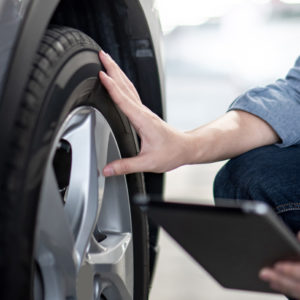A tire pressure monitoring system (TPMS) relearn is a process that lets your vehicle recognize and connect to its tire pressure sensors. It’s typically done after new sensors are installed.
The TPMS first identifies the tire pressure sensors, then their IDs are reprogrammed in the system to match their current positions. After that, the TPMS ensures all the sensors are communicating with it properly.
But what exactly makes TPMS relearn so important and how does one go about doing it?
What Makes TPMS Relearn Important?

Relearning your TPMS sensors ensures the system can accurately recognize the correct sensor IDs. This is crucial, especially after rotating the tires, replacing the sensors, or adjusting the tires’ air pressure.
Without relearning, TPMS readings can become inaccurate and unreliable. Here are some of the benefits that come with TPMS relearning.
Enhances Vehicle Performance
Letting your vehicle relearn the sensors helps keep your vehicle’s tire pressure optimal. With accurate monitoring, you can identify and address overinflated and underinflated tires. That means the engine won’t need to work harder to compensate, giving way to enhanced performance and fuel efficiency.
Prevents False Flags
If you don’t do a TPMS relearn when necessary, your sensors might make incorrect readings, leading to false alerts. Your vehicle could warn you to get maintenance or to inspect your tires even if there’s nothing wrong with them.
Improves Safety and Handling
Having a TPMS that works will help you keep your vehicle’s tire pressure within optimal levels. Proper tire inflation not only improves your ride’s performance but also gives you more traction, resulting in a safer and smoother driving experience.
What Happens if You Don’t Relearn the TPMS Sensors?
If you don’t let your vehicle relearn the sensors, they simply won’t work. You can still drive even without properly functioning TPMS sensors, though doing so comes with some disadvantages.
For example, you’ll have a harder time determining whether your vehicle’s tires have enough air in them. Underinflated tires mean less control over your vehicle, meaning you’re more likely to get into an accident without a working TPMS.
Not all vehicles can automatically relearn the TPMS while driving. Because of this, it’s a good practice to relearn the TPMS as soon as you’re able to.
TMPS Sensor Relearn Methods
There are three ways to relearn your vehicle’s TPMS sensors: manual relearning, OBD relearning, and auto relearning.
Manual Relearning
To manually relearn the TPMS, you need to conduct a series of ignition sequences and pedal presses. The exact method varies depending on your car’s make and model. You can check your vehicle owner’s manual for specific instructions.
Manual relearning is widely used because it doesn’t require fancy tools and technology. You can relearn your TPMS without buying any special equipment.
OBD Relearning
If manual relearning requires you to turn keys and press pedals, you can conduct OBD relearning using electronic devices, specifically a TPMS relearn tool.
Simply connect the tool to the on-board diagnostics (OBD) port, and it’ll help the sensors relearn the sensor IDs to their respective tire positions. It’s a straightforward process that gives way to accurate and reliable results.
Auto Relearning
If you’d rather let your vehicle relearn the TPMS automatically, you can simply drive and let your system adjust the sensors. This method of relearning is known as auto relearning or automatic relearning.
Bear in mind that not all vehicles are capable of relearning the TPMS automatically. If your vehicle has this option, you can accomplish auto relearning by simply driving. The exact distance you need to travel or the time you need to spend on the road varies. When in doubt, consult your vehicle owner’s manual.
How to Use a TPMS Relearn Tool
Using a TPMS relearn tool is a simple process that will help your vehicle relearn the system without many complications. Keep in mind that the exact process of relearning the TPMS varies depending on the make and model of your vehicle.
What You’ll Need
- TPMS relearn tool that’s compatible with your vehicle
What to Do
- Connect your TPMS relearn tool to your vehicle’s OBD port, which is typically under the dashboard.
- Turn on your TPMS relearn tool and select the TPMS relearn option (or anything similar).
- Follow the instructions indicated on your TPMS relearn tool and complete the procedure. The exact procedure will vary depending on the make and model of your vehicle as well as the TPMS relearn tool.
- Check the TPMS light on your dashboard and confirm that there are no errors. The light should stay off.
Any information provided on this Website is for informational purposes only and is not intended to replace consultation with a professional mechanic. The accuracy and timeliness of the information may change from the time of publication.


































